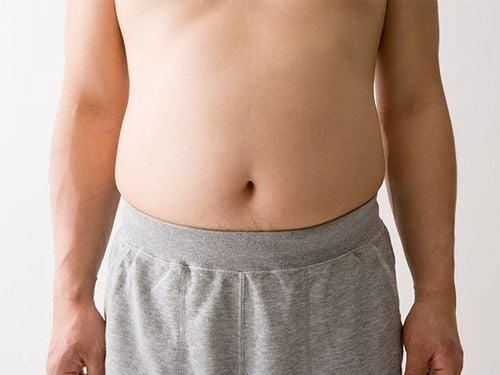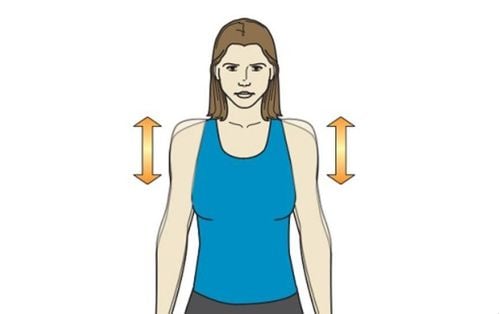Determining the precise ideal body fat percentage is quite challenging. However, it is possible to estimate body fat percentage using various methods. In reality, the body fat percentage of men and women differs significantly by age.
1. Methods Used to Measure Body Fat Percentage
There are many methods used to estimate body fat percentage. Most people tend to prefer simple and low-cost methods. While these methods may have some margin of error, they remain popular choices for assessing body fat percentage.
- Skinfold Calipers: Adipose tissue is considered to reside primarily under the skin. Based on this understanding, researchers assume that when excess fat is present, it can be pinched using skinfold calipers. This method was discovered and developed by a sports trainer.
However, using skinfold calipers can be challenging if the person taking the measurements changes each time. It’s important to study the method thoroughly and have only one individual measure your body fat throughout the evaluation process to minimize discrepancies in results. - Other Methods: Some individuals prefer to measure body fat at home instead of going elsewhere for assessments. You can use a measuring tape or a scale to get a rough estimate of your weight and body dimensions. This is a fairly effective method of monitoring body changes.
However, measuring tapes and scales cannot directly determine body fat percentage. They only provide a sense of changes in measurements compared to the initial state. While you may not know your exact body fat percentage, you can still feel positive fat loss progress through these methods.

2. Ideal Body Fat Percentage for Women
The BMI (Body Mass Index) calculation is based solely on height and weight. Thus, the results can differ between genders, introducing some degree of error. When considering men and women, women are often thought to store more fat. This is because women’s bodies require more fat for reproductive purposes and other biological functions.
The body fat percentage for women is categorized into different groups. Based on studies across various age groups and occupations, researchers have determined suitable and excess fat ranges for women:
- 10 - 13% fat: Barely enough fat to sustain basic survival functions.
- 14 - 20 % fat : Ideal for female athletes.
- 21 - 24% fat: Common among women with good health and attractive body shapes.
- 25 - 31% fat: The body fat percentage for individuals who do not have strict requirements for their body or desire a very toned physique.
- Above 32% fat: Indicates excess fat and increased risk of obesity-related diseases.
Another study suggests that age also influences women’s body fat percentage:
- 20–39 years old: 21–32% fat.
- 40–59 years old: 23–33% fat.
- 60–79 years old: 24–35% fat.
3. Ideal Body Fat Percentage for Men
Men tend to have lower ideal body fat percentages compared to women. Most men have more lean muscle mass, which affects body fat percentage. Additionally, women of reproductive age require higher fat levels to safeguard their health during pregnancy. Thus, studies show that men’s body fat percentages are significantly lower:
- 2–5% fat: Barely enough fat for survival.
- 6–13% fat: Ideal for male athletes.
- 14–17% fat: Common in men with good health and attractive physiques.
- 18-24% fat: The body fat percentage for individuals who do not have strict requirements for their body or desire a very toned physique.
- Over 25% of fat is considered obese and have an increased risk of developing diabetes, high blood fat, and cardiovascular diseases.
Similarly, researchers have studied the changes in men’s body fat percentages by age to compare them with women:
- 20–39 years old: 8–19% fat.
- 40–59 years old: 11–21% fat.
- 60–79 years old: 13–24% fat.
4. The Impact of BMI on Body Fat Measurement
Let’s remember the method of calculating BMI to assess body index. With just height and weight measurements, you can quickly and easily calculate your BMI. Based on research, the BMI index is understood as follows:
- Below 18.5: Underweight or malnourished, with a higher risk of malnutrition.
- From 18.5 to 24.9: Ideal BMI, balanced body, lower risk of diseases, and stable health.
- From 25 to 29.9: Overweight, needs to be addressed. At this level, issues are not too dangerous and can be improved.
- Above 30: Obese, with an increased risk of high blood fat, diabetes, and stroke.
One note you need to know is that BMI indices only apply to individuals aged 20 and above because, by that age, our bodies have almost fully developed. At this point, the body aims for balance. Below 20 years old, we are still developing, so weight and other indices can fluctuate, making BMI not entirely accurate.

5. Common Issues When Measuring Body Fat Percentage
Each method of body fat measurement has certain limitations. As a result, the calculated results should be considered approximate, as they can have errors of up to 8%. In other words, these methods are tools for assessing the risk of obesity rather than providing a precise ideal body fat percentage.
Every individual’s body is unique, so it is difficult to apply a universal formula for accurate evaluations. Differences in bone structure or muscle mass, for instance, can affect results. Thus, these methods are better suited for tracking personal weight loss progress than for making direct comparisons.
6. Expert Advice
If you are uncertain about basic knowledge regarding body fat percentage, do not hesitate to seek advice from experts. Experienced researchers and professionals can help you address these challenges.
Nutritionists can calculate and develop a fitness plan tailored to your health. Additionally, medical equipment at healthcare facilities can identify which nutrients your body needs and which ones to limit. A proper lifestyle, combined with a healthy diet, will empower you to combat the damaging effects of diseases.
You can choose any method to measure body fat percentage as you see fit. However, don’t overlook the importance of a balanced diet and regular physical exercise. A combination of positive practices will always be an effective solution for achieving success.
Reference source: healthline.com
To arrange an appointment, please call HOTLINE or make your reservation directly HERE. You may also download the MyVinmec app to schedule appointments faster and manage your reservations more conveniently.








